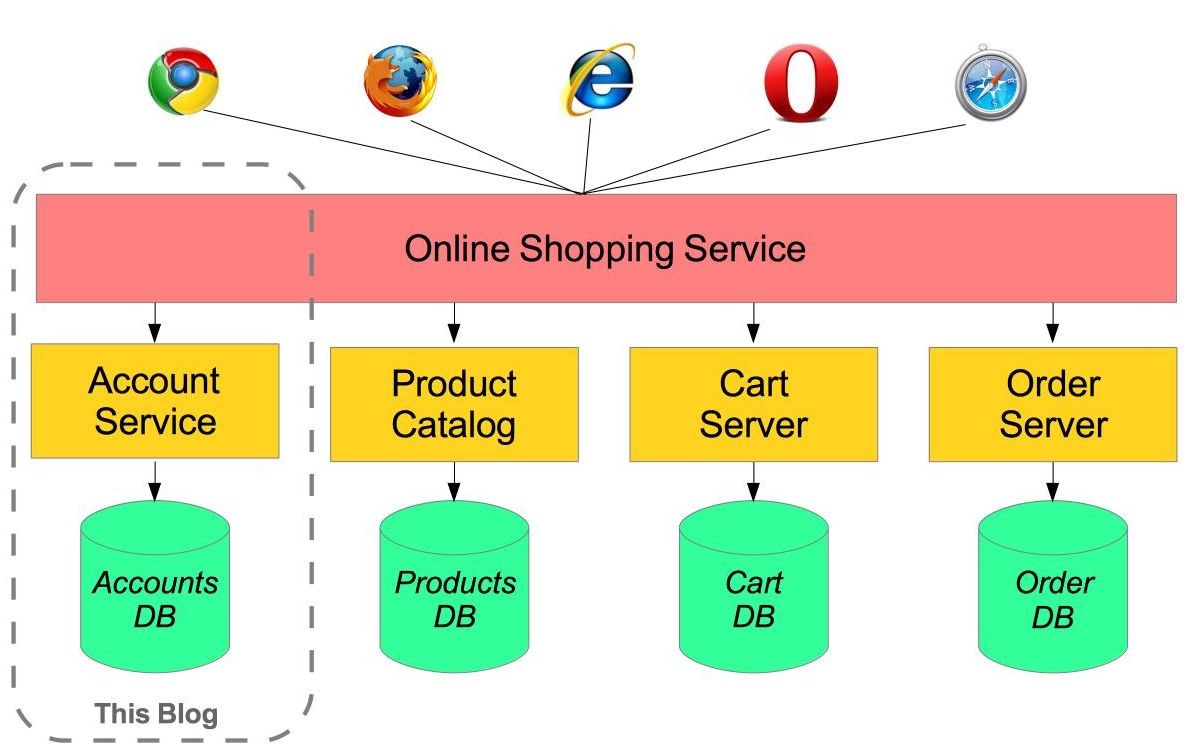What Are Microservices
Microservice is a form of service-oriented architecture style, loosely coupled distributed service wherein large application is split into small applications, communicating to each other normally by rest API. Distributed microservice architecture is built to solve the complicity of large monolithic applications.
Let’s consider the below example. Here an online shopping application can be either done as a single monolithic application or as microservices. Here the application is split into 4 different modules like account, product, cart and order. Each of them is different microservice and having different databases.
What Are the Benefits of Microservices?
The advantages of microservice include:
- Microservices improve your architecture’s scalability. The smaller modules are easy for developers to code and maintain. These are not dependent on any coding language, the developers can use the programming language that they are most familiar with or the one which suits a particular service.
- Another main advantage is that each microservice can scale independently via horizontally or vertically based upon your needs.
- When there is a change required in a particular part or section of the application, only the corresponding section could be redeployed and modified, so there is no need for redeploying and modifying the entire application.
- Microservices are easy for deployment as each module is smaller we can deploy it much fast and hence help in CI/CD.
- Microservices are easy to understand by developers as each module are smaller, they can understand the functionality of each service easily.

Best Practices for Microservices
- It’s better to use different databases for each microservices. This makes the opportunity to choose different kinds of databases for each microservice, depending upon the requirement.
- Another practice is to deploy each microservice in each container (i.e separate docker container). By using these containers, deployment can be made easier.
- The best microservices architectures can consider their services to be stateless. So microservices services and RESTful are often associated with each other.
Microservice frameworks in java
There are many frameworks that can be used for microservice development in java. Some of them are:
Spring Boot: Spring Cloud along with Spring Boot provides tools for developers to build some of the common patterns in distributed systems. Building a microservice in spring boot is easy and is one of the best microservice framework available in java. It works on the principles of aspect-oriented programming, inversion of control, etc.
Jersey: It is also another open-source framework based on java and it is easy to use.
Where to start
Before moving into microservices, it’s always better to ensure the following things:
- Use microservice whenever there is a real need for it i.e. if you need scalability or web-scale agility then you can go for it.
- You need to have a mature agile and DevOps practice for implementing microservices.
In practical microservices can help in scaling complex applications that have huge loads and requires continuous improvement. But like any other architectural approach microservices are not completely flawless, so you need to figure out whether the above-mentioned points are much relevant to your future application, get professional advice and proceed.
For a free consultation on IoT, Enterprise or Telecom Service, contact us at sales@thinkpalm.com
Author Bio:

Jerin George: Jerin works as a Senior Software Engineer with ETG department. His hobbies include traveling and keeping up with the latest technological trends.




